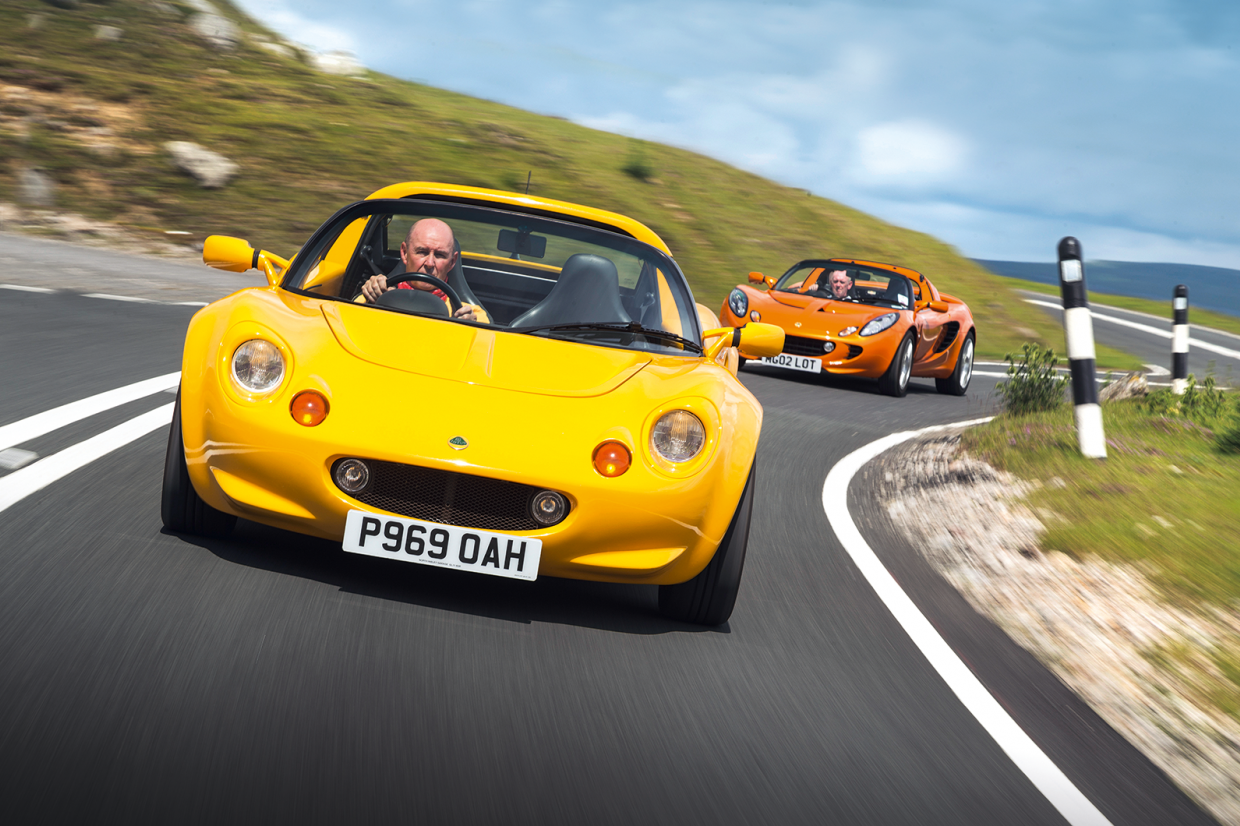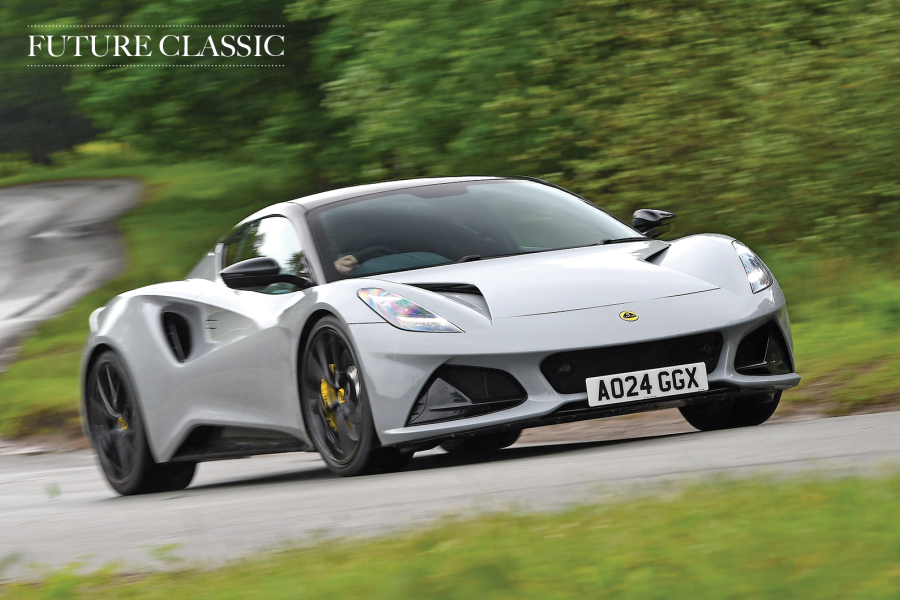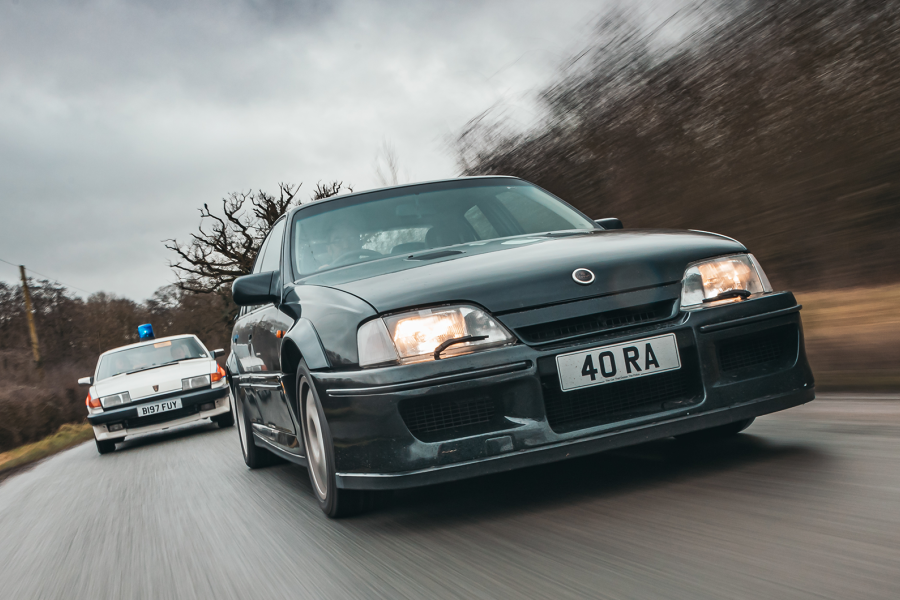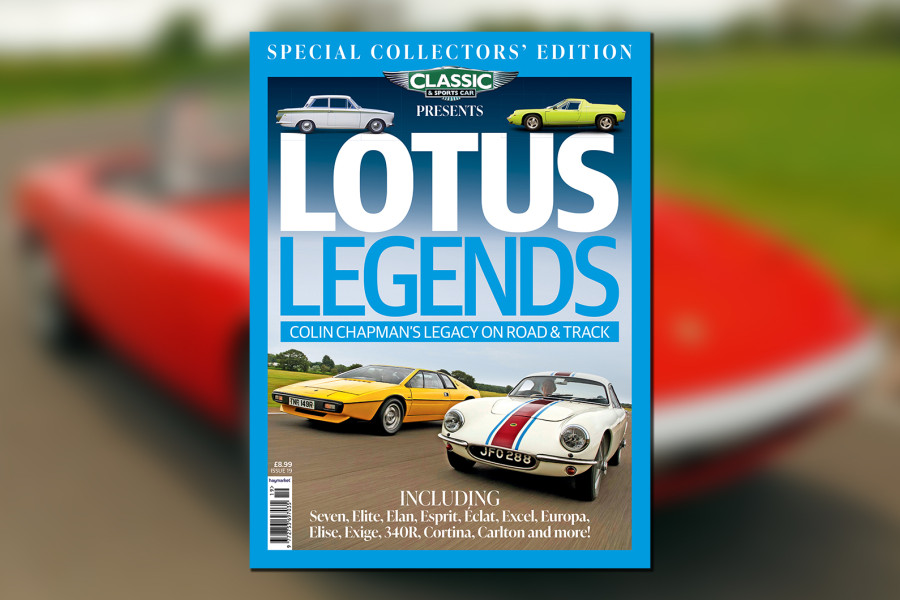Yet, in true Lotus fashion, not even one of the finest and most affordable drivers’ sports cars could keep money troubles out of the headlines and question marks from hanging.
Perhaps that affordability hadn’t helped; after all, it offers a pleasure far more expensive cars fail to even get close to.
“The environment is special in its simplicity: as a tool for driving, anywhere on any road, it’s the best I’ve ever owned”
A deal with General Motors to produce an Opel/Vauxhall sports car utilising Rackham’s chassis and the expertise working in the fields of Norfolk must have aided matters, though.
Officially there was less than 10% transfer of parts, but it modernised the factory, with 3000 GM twins to be built on the same line as the Elise as part of the deal.
Though the chassis was similar it had a different part number, and the VX220 appeared with lower sills and better boot space afforded by the longer wheelbase and wider track to fit the Astra’s 2.2-litre engine.
Detail changes for the S2 updated the Elise’s look and added a dose of aggression
The Elise, too, needed modernising. It had been designed in the early ’90s with classic Lotus models in mind, predominantly the 23, plus the Ferrari Dino and others.
While still an appealing shape, its age was unquestionably shown up when the Series 2 was launched in Birmingham in 2000 – affording Autocar the very pleasing ‘New Elise of life’ headline.
Steve Crijns’ update looks none of its two decades, its influence still visible in the new Emira, and what is perceived by some as a Series 3 Elise from 2011 is deemed just a ‘2.5’ by Lotus.
The foundations were built upon to perfection, and have needed only freshening in the intervening decades.
The extra power of the SC masks some of the inevitable weight gain as the S2 sprouted such luxuries as air-con and electric windows
The first Lotus designed digitally alongside a full-size clay model, the S2 integrated the trims to the chassis rails that GM requested to make the VX220 more saleable, and ingress is certainly improved without dampening the sense of theatre.
The dash looks more modern, the seats are more instantly comfortable and forgiving.
The headlights have encroached slightly into your field of vision via higher wheelarches, but they soon fade into the periphery.
Very familiar-looking air vents have sprouted, and a gaiter brings the aluminium-topped gearlever forward a few decades. There’s even a cupholder beneath the safer dash.
The S2 SC’s leather-lined cabin reveals the strive for wider sales appeal
“It’s pointless having a radio, though,” admits Michael Gallagher, whose supercharged S2 replaced a normally aspirated version as a retirement gift to himself.
“I’ve been in the club since I had my first, and bought this on the internet, unseen, from Kent. I’ve had it since 2009, one year since new.
“There were 9000 miles on it, and there’s 19k now. I only use it locally. It’s a magnitude of difference in terms of performance. It doesn’t seem so rattly and it has a lot of torque – that appeals to me, being old!”
A supercharger was trialled first in the hardcore Exige
The long-serving Rover engine finally gave way in 2003, not least because the Esprit was long overdue a successor in the USA and the Americans supposedly wanted the Elise.
Marque legend Roger Becker championed the cause, and once Lotus had been taken over by Proton he persuaded a reluctant Toyota into a deal for the 1.8-litre engine and six-speed ’box from the Celica.
By ’04 it was de rigueur across the range, and launched in the US a year later. (A non-compliant airbag has meant the Elise has been unavailable in America for the past decade.)
‘The blower’s constant whisper in your ear means there is interest on the straights’
Special editions sprawled from the line once again, including the return of the Europa name, a sort of precursor to the Evora but built on the Elise chassis, and the stripped-back 2-Eleven.
The more commercially minded SC perhaps had the biggest impact, shaving more than a second from the 0-60mph time to 4.3 secs yet remaining within a tonne in weight.
The Eaton supercharger kicks the car on to 150mph, too, some 26mph clear of the original S1.
It makes the Elise a different animal. Not entirely, but one that is more usable and user-friendly.
Both generations of Elise are composed, poised and so much fun to drive
The increased torque means the ’box needs to be played less, able to pick up quicker through a responsive throttle without bogging down and leaving you to focus on hitting your line.
The blower’s constant whisper in your ear means there is interest on the straights, too. Touch a cat’s eye and the S2 better smothers the banging and clattering than the soundproof-free S1.
Nothing disrupts either’s poise and composure, though, and with care even through bends you can toy with the weight distribution by squeezing the power in and out.
The steering needs just a light touch and is utterly captivating.
You might not have much boot space, but that’s not the point of a Lotus Elise
It’s of little surprise that neither owner has taken their Elise on many long-distance trips; the boot is little more than a coolbox-sized gap behind the engine.
If it’s carrying the soft-top – and you rarely see one with the roof on – the load area is compromised yet further.
Luckily, you simply don’t need to go far to get the most out of an Elise – get an Evora if you want to go the distance, and cherish every corner in the Elise.
Any generation of Lotus Elise will still turn heads today, despite the model being a quarter of a century old
Though the lineage has become confusingly expansive, these two in many ways encapsulate the model.
If you want to chase apices and play, original is best. The S1’s lightness and sharpness are like little else on the road, and the fact that it looks a touch dated has added to its classic credentials.
But if you want the freedom to enjoy that sublime chassis with a bit of top speed in hand and without needing to work for it, then the SC is perfect.
The day in question and the task at hand would dictate my choice. What is for sure, however, is that few classic owners are as satisfied as those with an Elise.
As its retirement approaches, this Lotus saviour will be talked about for far longer even than its soon-to-end lifetime.
Images: Luc Lacey
Thanks to SELOC Lotus Enthusiasts
The inside line from the man on the track
Gavan Kershaw started working for Lotus at the tender age of 16
Gavan Kershaw can very reasonably claim to know the Lotus Elise better than anyone else. Certainly nobody, except perhaps Matt Becker, has lapped Hethel more in one than the Lotus local.
He and Becker started at the factory on the same day, both aged 16, three decades ago.
“We were out from virtually the first prototype,” Kershaw reminisces, “and being young we’d embrace every test trip. We did a 24-hour race around Hethel in an Elise vs a Sunseeker around the UK.
“During the S1’s development was when the track changed, and during S2 it became more representative of how it is now.”
And that change was mirrored, conveniently, in the cars: “S1 to S2 was a huge jump because we added the brake booster, the Bilstein dampers, a new steel rear subframe and completely different suspension geometry at the rear.”
Kershaw has spent more time driving Lotus Elises than most
“We also wanted to change the S1’s negative camber in droop. They were lively on lift-off, and we had a huge carve-up of the rear suspension to put positive camber in: when you see an S2 corner, you can see much more tyre on the ground.
“Linked with that we worked with Bridgestone on a bespoke tyre – people said we were mad when we came out with the 175 fronts and 225 rears, but it meant we could get the balance, steering effort and feel we wanted. Initially we were using off-the-shelf tyres and often just looking for the best rear with the worst front, in effect.
“We didn’t want to change the rearward weight too much because to do so we would have had to add it – we couldn’t take any of it away.
“Customers said they wanted a bit of brake feel, because though they are good they don’t give you much confidence on initial check braking, plus ABS came into legislation.
“People talked about ingress and egress, so part of the S2 was to improve barriers to sale. Vauxhall helped, but we kept to what we wanted. Some of the suppliers we were able to use were because of the volumes of both cars.”
“The K-series you had to work quite hard, whereas the Toyota was more modern and free-revving”
When the Toyota engine became standard, the key was then to retain the driving sensation.
“It gave us a natural increase of power,” says Kershaw, “but a different delivery. The K-series you had to work quite hard, whereas the Toyota was more modern and free-revving.
“We had to work on the gear ratios to work with the tyres, and not to lose that agility.
“The supercharger was a motorsport product. We put the intercooler above the engine, with the roof scoop, and then the Exige 240R was born.
“That showed us what superchargers could do while everyone else was working on small-capacity turbo engines or small-capacity with superchargers, rather than out-and-out cubic inches. The torque delivery was really good, maximum just off idle to a natural power delivery when the road loads come in.
“The general ride and handling was never criticised, so the job for Matt and me was to maintain it. We knew how we’d got there, working with John Miles and Tony Shute, and needed to tune the new systems to match it.”
Factfiles
Lotus Elise S1 1.8i
- Sold/number built 1996-2000/ 8613 (1.8i only)
- Construction riveted and bonded extruded aluminium chassis, glassfibre body
- Engine all-alloy, dohc 1796cc 16v ‘four’, multi-point fuel injection
- Max power 118bhp @ 5500rpm
- Max torque 122lb ft @ 3000rpm
- Transmission five-speed manual, RWD
- Suspension independent, by double wishbones, coil springs, Koni monotube dampers; front anti-roll bar
- Steering rack and pinion
- Brakes ventilated discs
- Length 12ft 1½in (3726mm)
- Width 5ft11½in (1820mm)
- Height 3ft 11¼in (1202mm)
- Wheelbase 7ft 6½in (2300mm)
- Weight 1594lb (723kg)
- 0-60mph 5.5 secs
- Top speed 124mph
- Mpg 28
- Price new £18,950
- Price now £10-25,000*
Lotus Elise S2 SC
- Sold/number built 2007-’11/1402
- Construction riveted and bonded extruded aluminium chassis, glassfibre body
- Engine MMC and aluminium dohc, VVTL-i 1796cc 16v ‘four’, Eaton M45 supercharger
- Max power 217bhp @ 8000rpm
- Max torque 156lb ft @ 5000rpm
- Transmission six-speed manual, RWD
- Suspension independent, by double wishbones, coil springs, Bilstein monotube dampers; front anti-roll bar
- Steering rack and pinion
- Brakes ventilated discs, with servo and anti-lock
- Length 12ft 5in (3785mm)
- Width 6ft (1850mm)
- Height 3ft 8in (1117mm)
- Wheelbase 7ft 6½in (2300mm)
- Weight 1918lb (870kg)
- 0-60mph 4.3 secs
- Top speed 150mph
- Mpg 33
- Price new £32,550
- Price now £30,000*
*Prices correct at date of original publication
READ MORE
Buyer’s guide: Lotus Elise S1
Buyer’s guide: Vauxhall VX220
How the Elise saved Lotus and became a legend
Buyer’s guide: Lotus Elan (1963-’74)
Jack Phillips
Volvo-owning Jack Phillips is a contributor to and former Deputy Editor of Classic & Sports Car





































